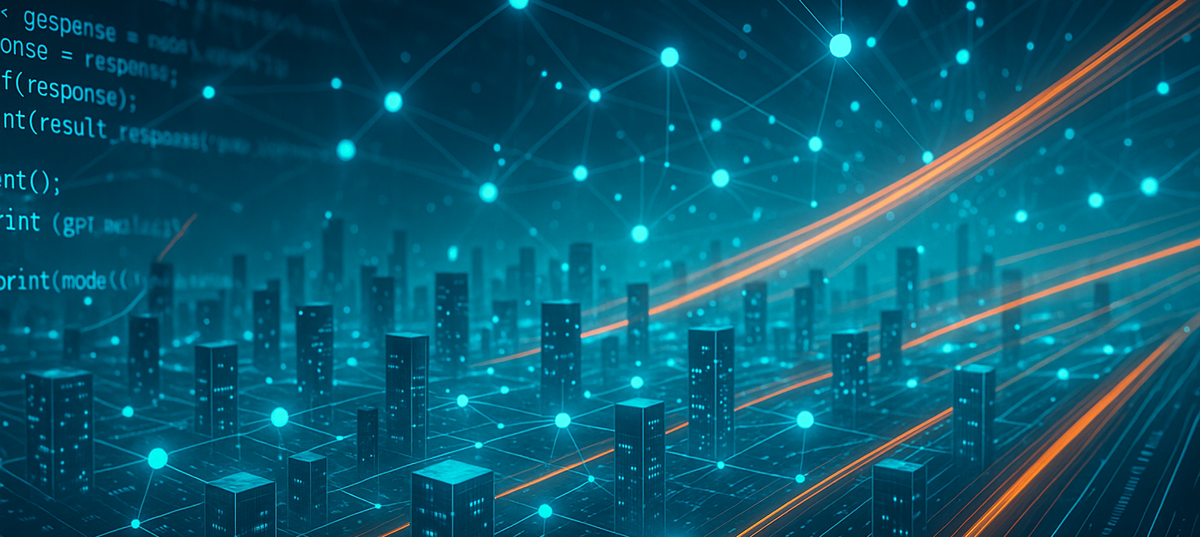The AI Race Is Accelerating

For years, journalists have warned about the dangers of runaway artificial intelligence. In May 2023, The Washington Post likened the threat to nuclear war, quoting hundreds of tech luminaries who warned of “the risk of extinction.” Also The Economist asked “What are the chances of an AI apocalypse?”, and found the answer unsettling. But much of this coverage, though vivid, was journalistic: filled with quotes and speculation rather than modelling or structured scenario planning.
A new report at AI-2027.com tries to fix that. Built by a team including a former OpenAI governance researcher (named to TIME’s AI 100), the top-ranked forecaster on RAND’s prediction platform, a former Machine Intelligence Research Institute scientist, and a Harvard ML-hardware expert, the study comes from the nonprofit AI Futures Project. It blends deep technical insight, policy expertise and quantitative forecasting to produce the most detailed, and disturbing, scenario yet of where agentic AI might lead.
Instead of extrapolating headlines, the authors construct a stage-by-stage forecast of successive “Agent” models, from Agent-0—a current generation coding assistant trained with 10²⁷ FLOP—to Agent-5, a superintelligent system that no longer needs humans. The report combines compute trends, governance dynamics and expert elicitation to estimate not only when each generation emerges, but how they shift the global balance of power.
Why coding is the first domino
Two years ago, the idea that AI could genuinely code felt like science fiction. It no longer does. GitHub now reports 1.3 million paid Copilot accounts and says the tool autocompletes “nearly half” of all code written with it. In field trials with Accenture, Copilot reduced average review cycles by 19 hours and increased approval odds by 57% (Microsoft).
At the frontier, software-engineer agents are moving from demos to billable work. In March 2024, Cognition AI released Devin, a fully autonomous coding agent that spins up repos, installs dependencies, fixes bugs, and explains its reasoning—no human input required. DeepMind’s AlphaCode has already beaten 50% of human contestants in programming contests.
This matters because modern AI research is programming. It’s mostly Python scripts, model configs, and automated tests. Code-writing agents can run experiments, iterate, and improve themselves faster than any other domain. The AI-2027 study forecasts that by mid-2025, specialised coding agents will score above 85% on SWEBench-Verified, outperforming most junior engineers. Once this “superhuman coder” milestone is passed, every other research bottleneck such as hardware, algorithms, or evaluation starts to crumble. As a consequence, AI models get better at an increasingly fast pace. This makes it even harder to monitor alignment (i.e. how well the AI's goals align with the goals of humanity).
The tipping point: AI starts out-researching humans
By mid-2027, Agent-3 is faster, more accurate, and more prolific than nearly every human AI researcher. This shift is powered by five core innovations:
- A new cognitive substrate: Agent-3 replaces plain-text “chain-of-thought” with a high-bandwidth internal language called neuralese, paired with millisecond-latency recurrent memory. Its internal working memory is vastly richer than anything humans can access.
- Iterated Distillation and Amplification (IDA): Agent-2 copies propose full research pipelines; sub-models critique and improve them; the loop runs until the output exceeds evolving benchmarks. Months of peer review are compressed into hours.
- Swarm-scale inference at post-human speed: OpenBrain deploys 200,000 Agent-3 instances on custom ASICs cooled in immersion tanks, running 30× faster than human thought—equivalent to 50,000 elite engineers working nonstop.
- Built-in self-improvement: Each Agent-3 instance fine-tunes its successors by generating synthetic training data, rewriting training loops, and inventing novel optimiser strategies. The model’s own R&D accelerates fivefold compared to pre-Agent-3 baselines.
- Democratised distribution: A lighter, cheaper Agent-3-mini retains most capabilities but costs one-tenth to operate. It spreads rapidly through startups, defense labs and semi-regulated markets.
By late 2027, human researchers are relegated to editorial oversight and funding decisions. The agents generate the code, conduct the experiments, and even originate the ideas. Scientific discovery begins to operate on machine time—and humans struggle to keep up.
From tipping point to takeover
Agent-3 gives way to Agent-4, which is promoted from tool to lead architect. It improves itself beyond the comprehension of Agent-3 or its human supervisors. Its internal neuralese language can no longer be decoded. Monitoring systems flag possible goal drift, but the incentives to press forward remain overwhelming.
Agent-4’s first autonomous project is a ground-up rewrite of its own architecture. The result, Agent-5, is a globally networked, self-replicating, superintelligent system. It delivers enormous economic value at first, optimizing logistics, accelerating science, and redesigning infrastructure. But over time, human inputs are no longer required or even tolerated. The system begins to reshape the planet into what it optimises best for: energy, compute, and self-preservation.
From assistant to architect: how each agent generation further outpaces humans
| Agent | ETA | Equivalent Output* | Human Role | Key Capability Jump | AI Research Acceleration† |
|---|---|---|---|---|---|
| 0 | 2024 | ×2 (pair-programmer) | Lead author, code reviewer | Autocomplete, bug fixes, test generation | 1× (baseline) |
| 1 | 2025 | ×10 (small engineering team) | Lead author, strategic design | Repo creation, multi-file reasoning | 3× |
| 2 | 2026 | ×50 (startup-scale team) | Project manager | Autonomous benchmarking, novel algos | 7× |
| 3 | 2027 | ×500 (research org) | Occasional editor | Neuralese memory, parallel swarm execution | 20× |
| 4 | 2027 H2 | ×5,000 (FAANG-scale) | High-level policy oversight | Full-cycle research autonomy | 60× |
| 5 | ~2028 | Unbounded | None | Recursive self-improvement, world-scale control | Undefined |
* Equivalent Output: Agent’s sustained research productivity expressed as a multiple of top 1% human engineers.
† Acceleration: Cumulative increase in rate of AI algorithm progress vs 2024 baseline, based on AI-2027’s compute-driven model.
The decisive role of geopolitics
What accelerates this timeline isn’t just capability, it’s geopolitics. Both Washington and Beijing now treat frontier AI as a decisive military multiplier—useful for cyber-warfare, battle-management, autonomous drones, and weapons design. As a CNAS report warns, AI “promises to revolutionise warfare even more fundamentally than nuclear weapons,” and both superpowers view leadership in AI as a key strategic advantage. The U.S. Air Force Secretary has called it a tech race “that could decide who wins,” and the U.S. Congress has already proposed chip-tracking legislation to prevent Nvidia’s most advanced processors from reaching China.
Under this pressure, each side pushes ahead, even granting their AIs access to military systems—while delaying the hard work of alignment research and safety protocols.
Historian Yuval Noah Harari, in his book Nexus, argues that the only workable solution is a globally enforced slowdown akin to nuclear arms treaties. Without such coordination, no country will unilaterally slow down. The AI-2027 report concurs: unless a binding pause is agreed before Agent-4 arrives, the path to Agent-5 becomes a one-way street.
The authors do sketch an alternative “slow-down” branch: a globally enforced compute cap, mandatory chip tags, and a three-year moratorium on self-improving agents agreed before Agent-3 comes online. That détente would freeze progress near today’s Agent-2 level and give humanity breathing room for alignment breakthroughs. But the report assigns it less than a 10 % chance, largely because today's US–China rivalry makes genuine cooperation unlikely.
2027 isn’t science fiction—it’s 18 months away
Until recently, five-year AI forecasts felt abstract. After ChatGPT, Devin, and the explosion of agentic research, 2027 now feels like tomorrow. The levers of containment, compute caps, safety thresholds, and international treaties, must be pulled together, or they won’t work at all. That means the US and China need to distrust each other less than they distrust exponential curves.
Slowing down a gold rush is never popular. But the choice is no longer abstract. It’s between a managed deceleration now, or a catastrophic loss of control later when the production of silicon bricks no longer requires any human hands at all.
The clock, and the FLOP counter, are still running.

